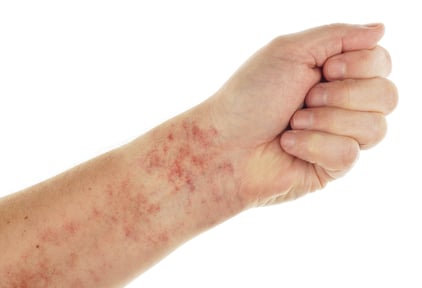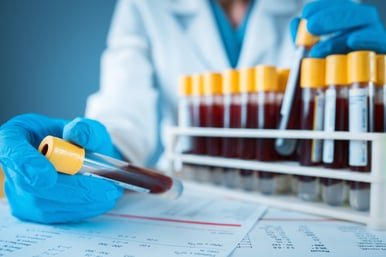Symptoms of Leukemia Can Vary and Also Mimic Other Common Illnesses

Like most previous types of cancer, you can diagnose and start treatment for leukemia tends to be more successful. however, the first symptoms of leukemia can vary depending on the type of leukemia and are often confused with other common diseases. To help raise awareness of symptoms that need to be cautious, The Rocky Mountain Cancer Center (RMCC)has details of symptoms according to the type of leukemia.
“The initial symptoms of leukemia are very broad and very similar to those of other diseases and illnesses,” says Dr. Alan Fenner says. “For this reason, seek medical attention if you have any concerns.”:
Early Symptoms of Leukemia

- Fatigue
- Loss of appetite
- Bone/joint pain
- Headaches
- Fever, chills
- Unexplained weight loss
- Night sweats
- Abdominal discomfort
- Petechiae (small red spots under the skin)
There are also some common Leukemia Symptoms that are less common. “Less common symptoms of leukemia include vomiting, pain in the arms, legs, or lower back, thin skin, swelling of the gums or lymph nodes, and an enlarged spleen or liver,” says Dr.Feiner said.
The fast-growing form of leukemia is called “acute” and the symptoms are usually more pronounced and distinct. Due to the speed of progression of this leukemia, patients who have any of the following symptoms should not delay seeking treatment:
Symptoms of Acute Leukemias (Acute Lymphocytic Leukemia and Acute Myeloid Leukemia)
- Bruising easily and/or eaeasilyleeding
- Blood clotting issues, such as frequent or severe nosebleeds and bleeding gums
- Anemia
- Weakness
- Dizziness or lightheadedness
- Shortness of breath
- Fever
- Recurring or chronic infections, often with fever
- Joint and bone pain
Many of these early leukemia symptoms are the result of a shortage of normal blood cells, which can, fortunately, be identified fairly easily with a blood test.
Symptoms of Chronic Leukemias

Acute leukemia differs from the chronic form of the disease in that it progresses slowly. Therefore, the symptoms of acute leukemia usually appear less pronounced and less suddenly. Acute leukemia includes acute lymphocytic leukemia, suture cell leukemia and acute myeloid leukemia. It’s not unusual that you don’t have any symptoms. However, this type of leukemia is usually detected by routine blood tests because it causes a slight increase in the number of white blood cells or, in the case of hair cell leukemia, a slight decrease in the number of red and white blood cells and platelets. In addition, cutaneous leukemia can cause severe skin itching.
Chronic myeloid leukemia is a form of chronic leukemia that affects older people more often than young people or children. The symptoms of chronic myeloid leukemia are:
Tiredness
Shortness of breath
Decreased appetite
Weight loss
Enlarged spleen and/or lymph nodes
Recurring or chronic infections in areas such as the skin, lungs, or kidneys
At What Point Should You Seek Medical Attention?
“Not all people with some or all of these symptoms have leukemia, so there is no need to assume the worst,” says Dr. Fenner. “But that doesn’t mean you should ignore it.”
While the initial symptoms of leukemia can mimic many other conditions, most of which are relatively harmless, those who suffer from it should pay attention to how long the symptoms last until they improve. Symptoms that do not improve or continue to reappear within two weeks, even if they improve during a flare-up, are worth discussing with your family doctor.
What are the first signs of having leukemia?
- The first signs of having leukemia can vary depending on the type and stage of the disease. However, there are some common early symptoms to look out for. Fatigue and weakness are often early indicators, as leukemia affects the production of healthy blood cells, leading to anemia. Unexplained weight loss, fever, and frequent infections may also be observed, as leukemia compromises the body’s immune system. Easy bruising or bleeding, such as nosebleeds or prolonged bleeding from cuts, can occur due to low platelet count. Swollen lymph nodes, especially in the neck, armpits, or groin, may be another noticeable sign. Additionally, bone or joint pain, particularly in the legs, can be present. It’s important to remember that these symptoms can be caused by various conditions, and a thorough medical evaluation is necessary to diagnose leukemia accurately.
How is leukemia caused?
- Leukemia is caused by mutations in the DNA of blood cells, particularly in the bone marrow where blood cells are produced. These mutations disrupt the normal growth and development of blood cells, leading to the uncontrolled proliferation of abnormal white blood cells. The exact cause of these mutations is not always clear, but certain risk factors have been identified. Exposure to high levels of radiation, such as from radiation therapy or nuclear accidents, can increase the risk of developing leukemia. Some chemicals, like benzene, found in certain industrial products and tobacco smoke, have also been associated with the development of leukemia. Inherited genetic conditions and previous chemotherapy or radiation treatment for other cancers can also predispose individuals to leukemia. However, in many cases, the specific cause of leukemia remains unknown.
Can leukemia be cured?
- The treatment and prognosis of leukemia depend on several factors, including the type of leukemia, its stage, and the overall health of the patient. Some types of leukemia, particularly acute leukemias, can be aggressive and require immediate treatment. Treatment options for leukemia include chemotherapy, radiation therapy, targeted therapy, immunotherapy, and stem cell transplantation. In some cases, a combination of these approaches may be used. The goal of treatment is to eliminate or control the abnormal cells and allow the production of healthy blood cells to resume. With advances in medical research and treatment options, many forms of leukemia can be effectively managed or cured. However, the outcome varies depending on the individual and the specific characteristics of the disease. Some types of leukemia have high remission rates, while others may require long-term management or result in a chronic condition.
When does leukemia start?
- Leukemia can start at any age, although certain types are more common in specific age groups. It is most frequently diagnosed in adults over the age of 55 and is the most common cancer in children and teenagers. The exact cause of leukemia is still not fully understood, but it involves genetic mutations that occur in the early stages of blood cell development. These mutations can disrupt the normal growth and maturation process, leading to the accumulation of abnormal cells. Over time, these abnormal cells can crowd out healthy cells in the bone marrow and spill into the bloodstream, ultimately affecting various organs and tissues. Early detection through regular medical check-ups and awareness of potential symptoms is crucial for timely diagnosis and treatment of leukemia.

